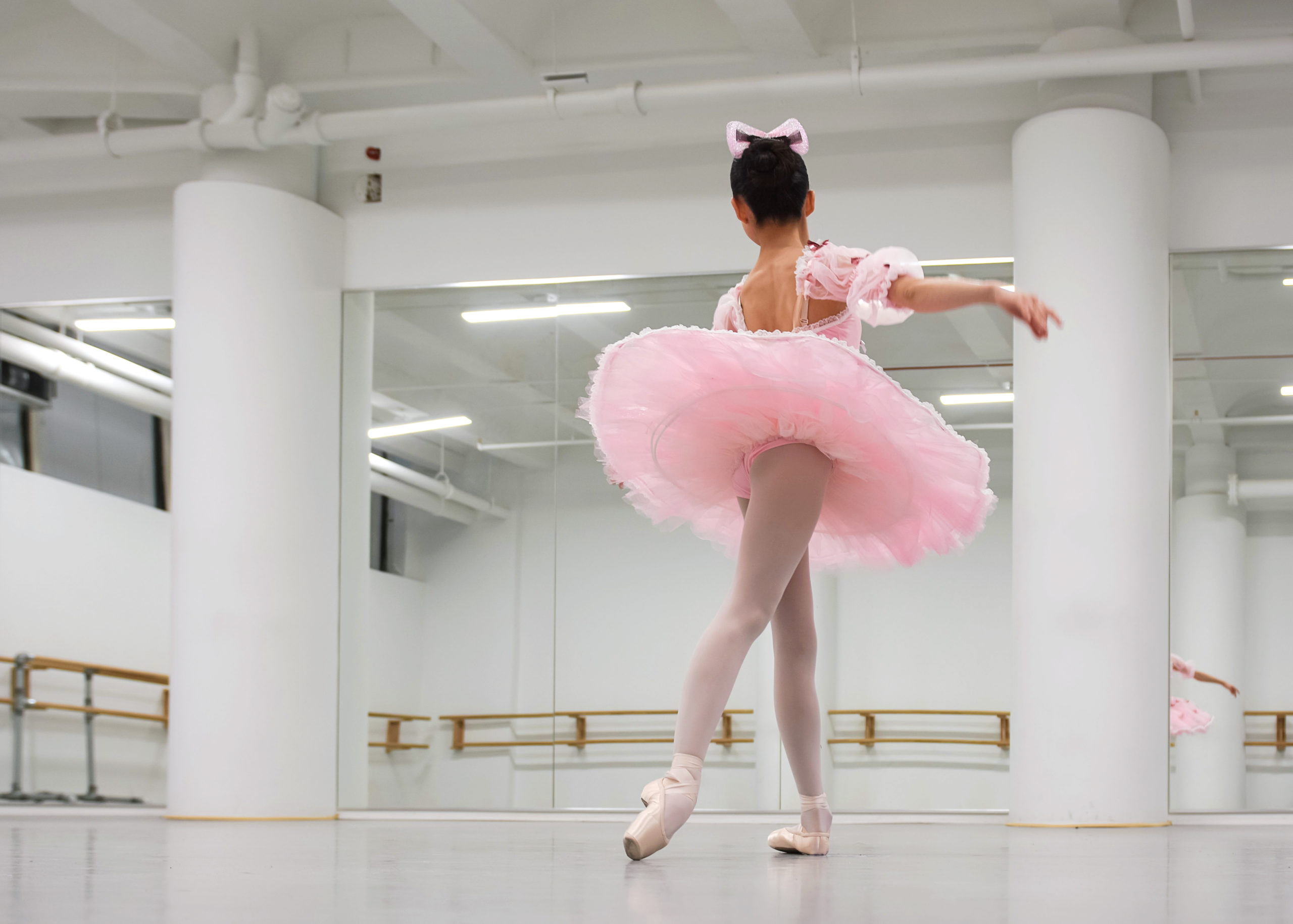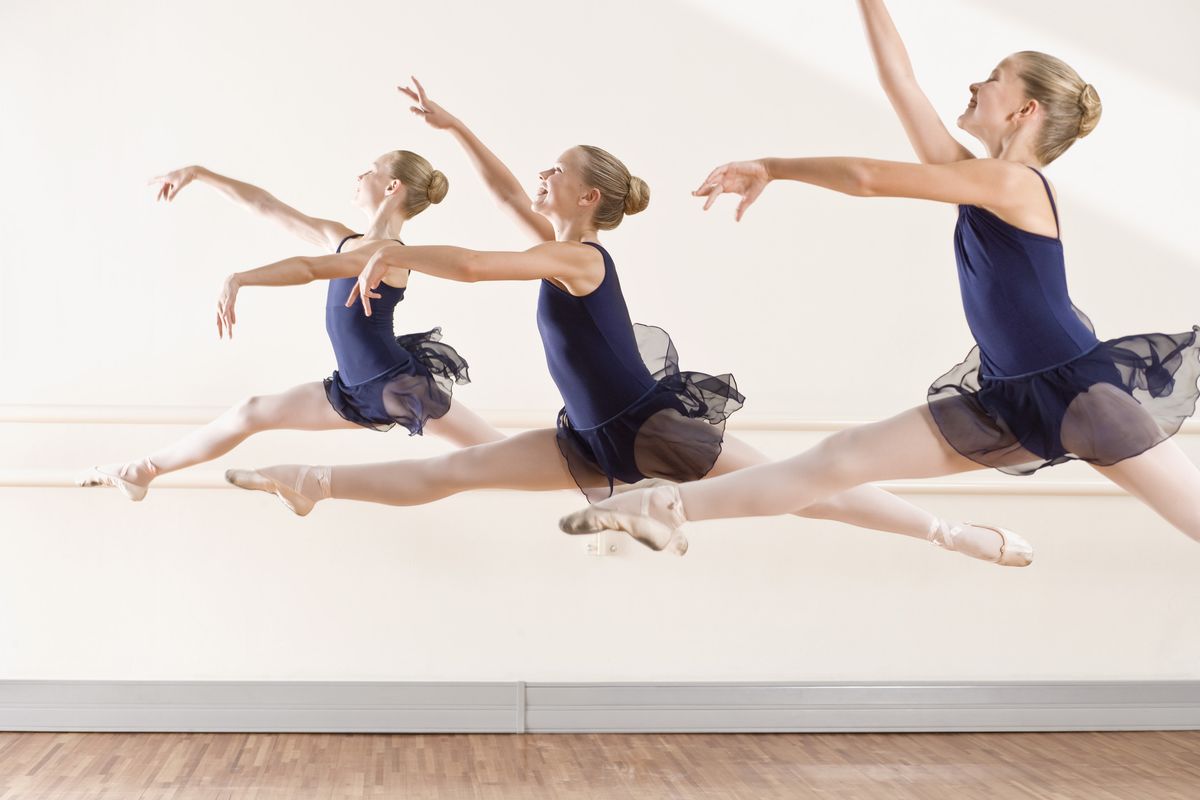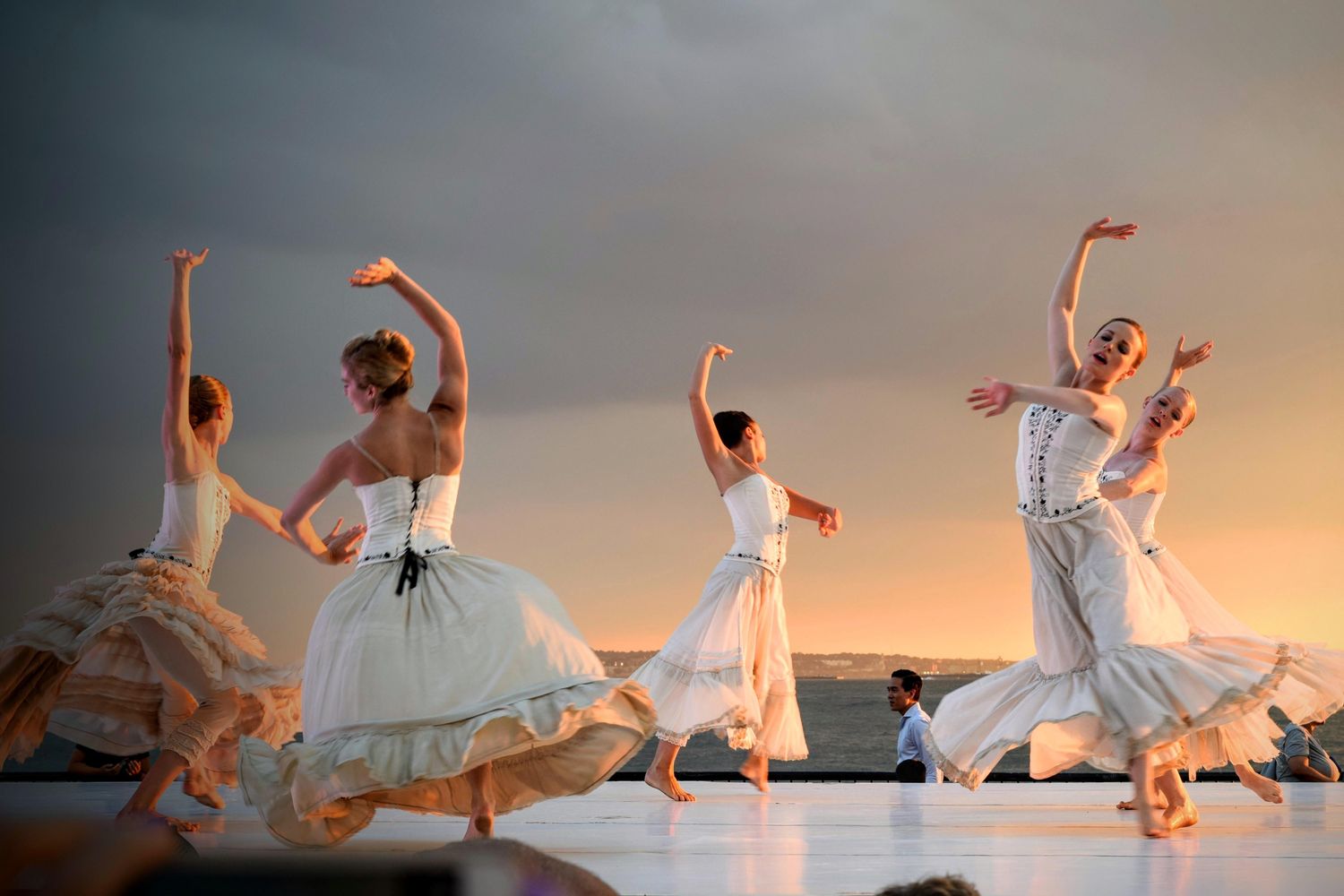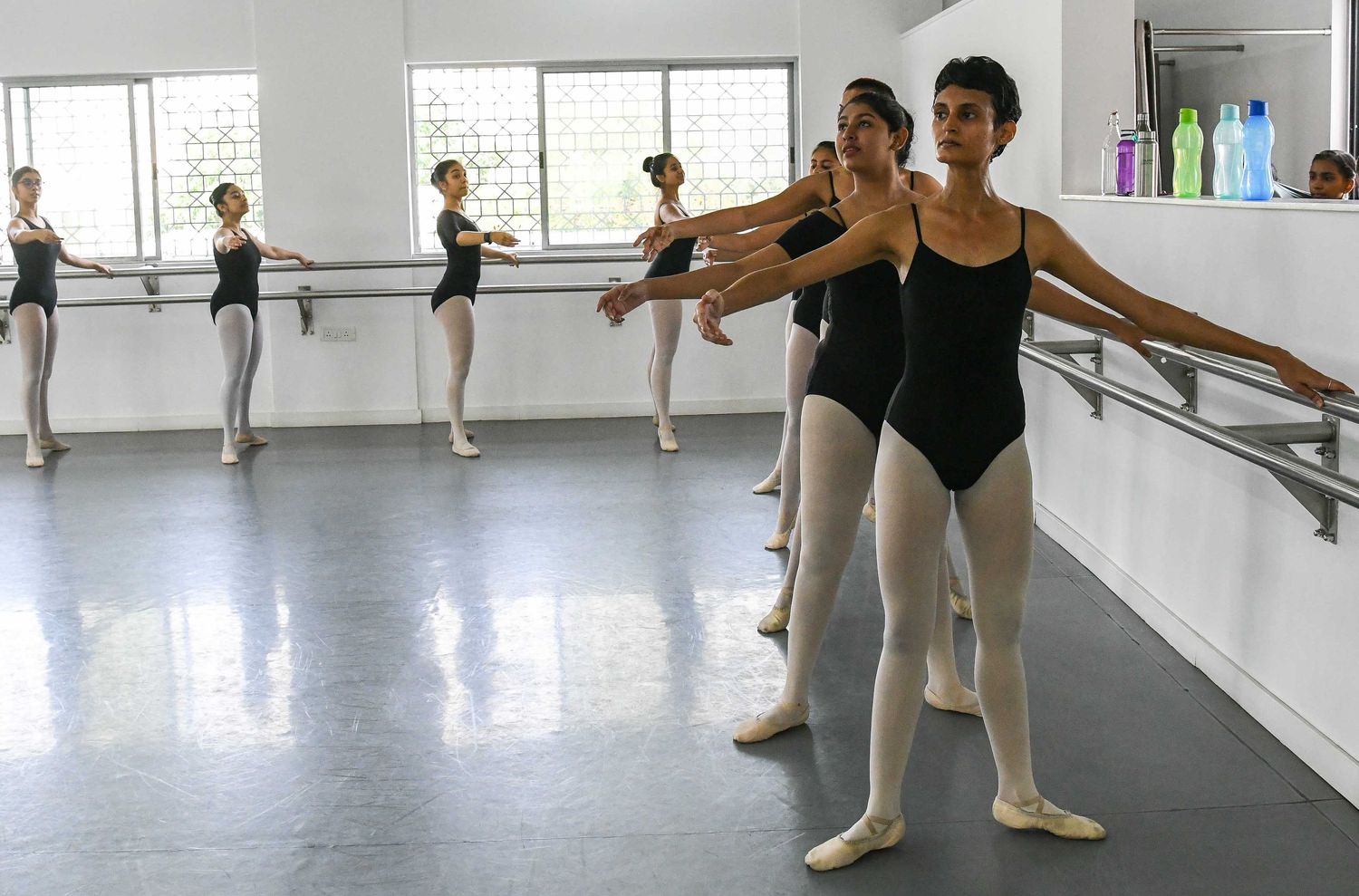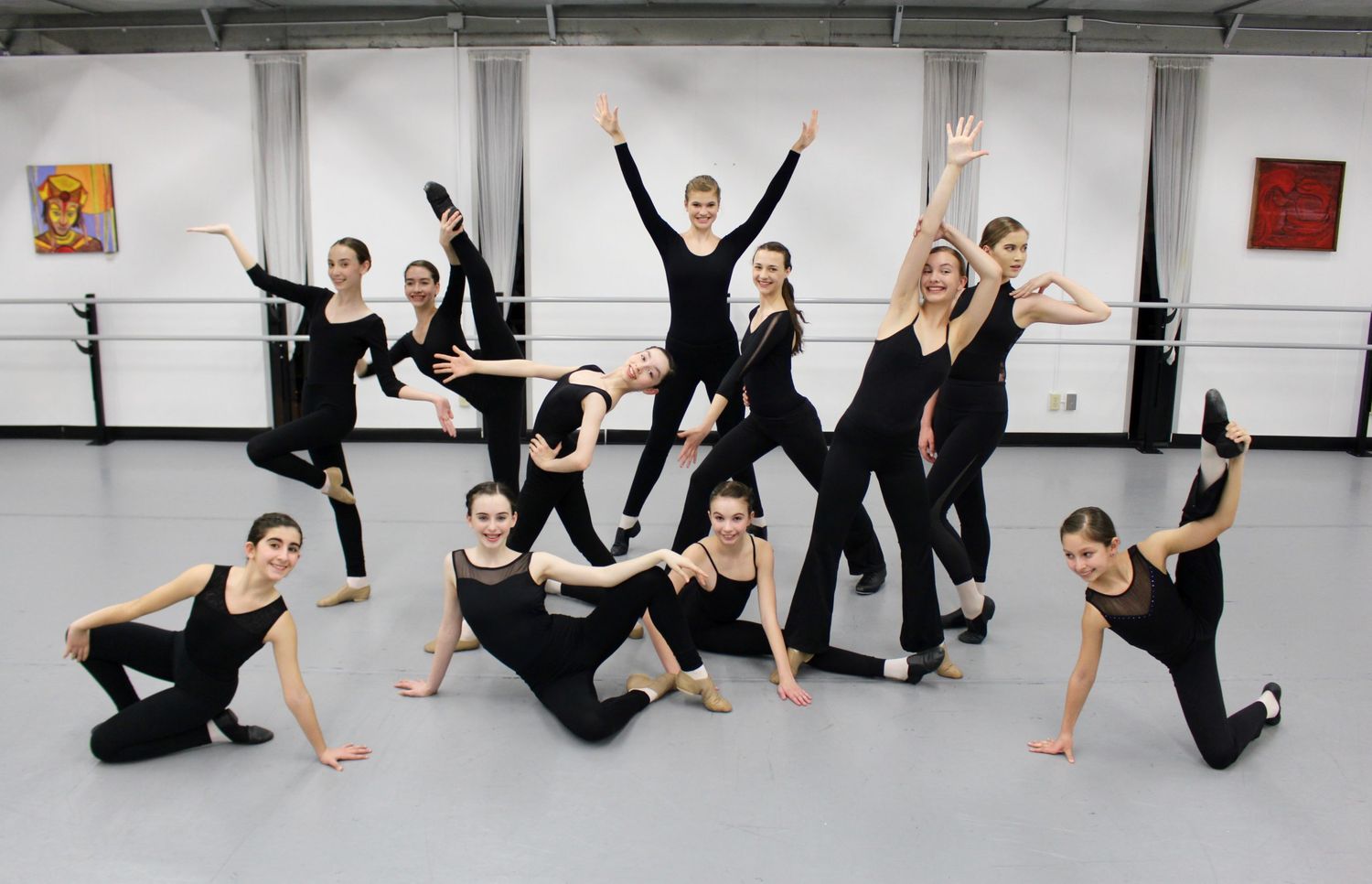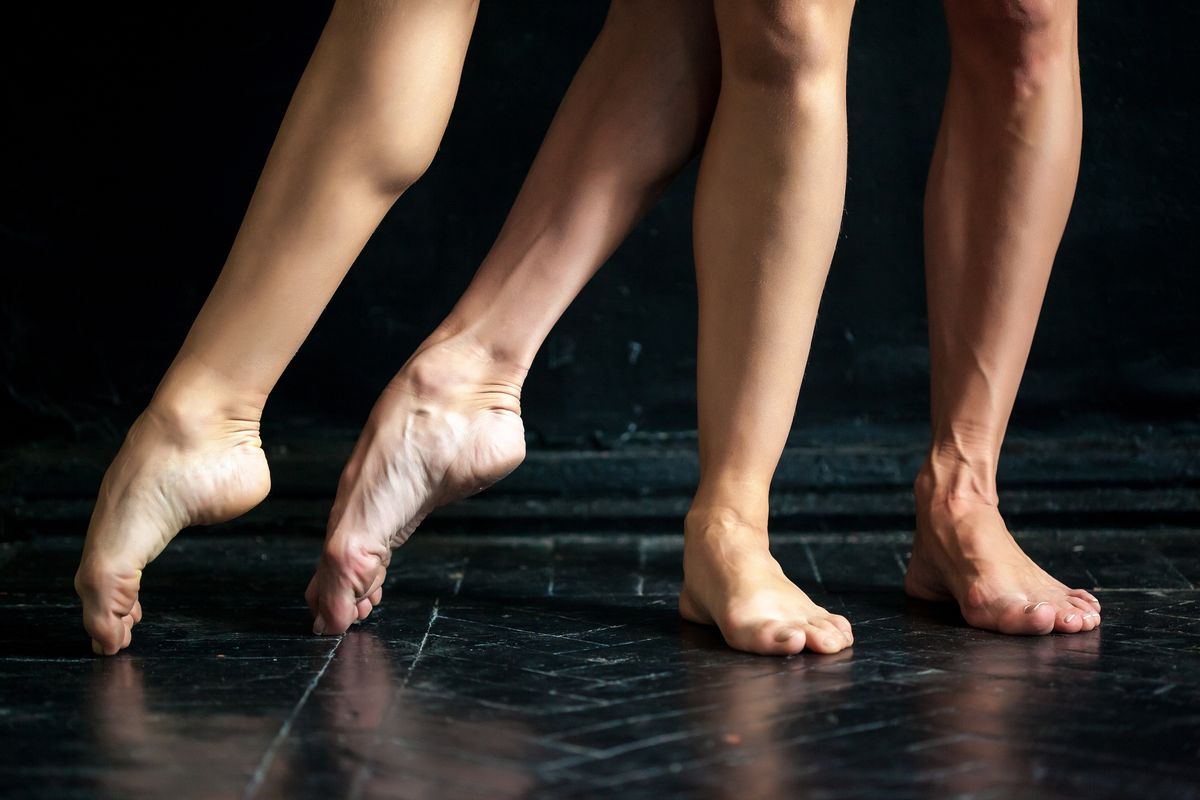Home>Events & Info>Ballet>How To Understand Ballet
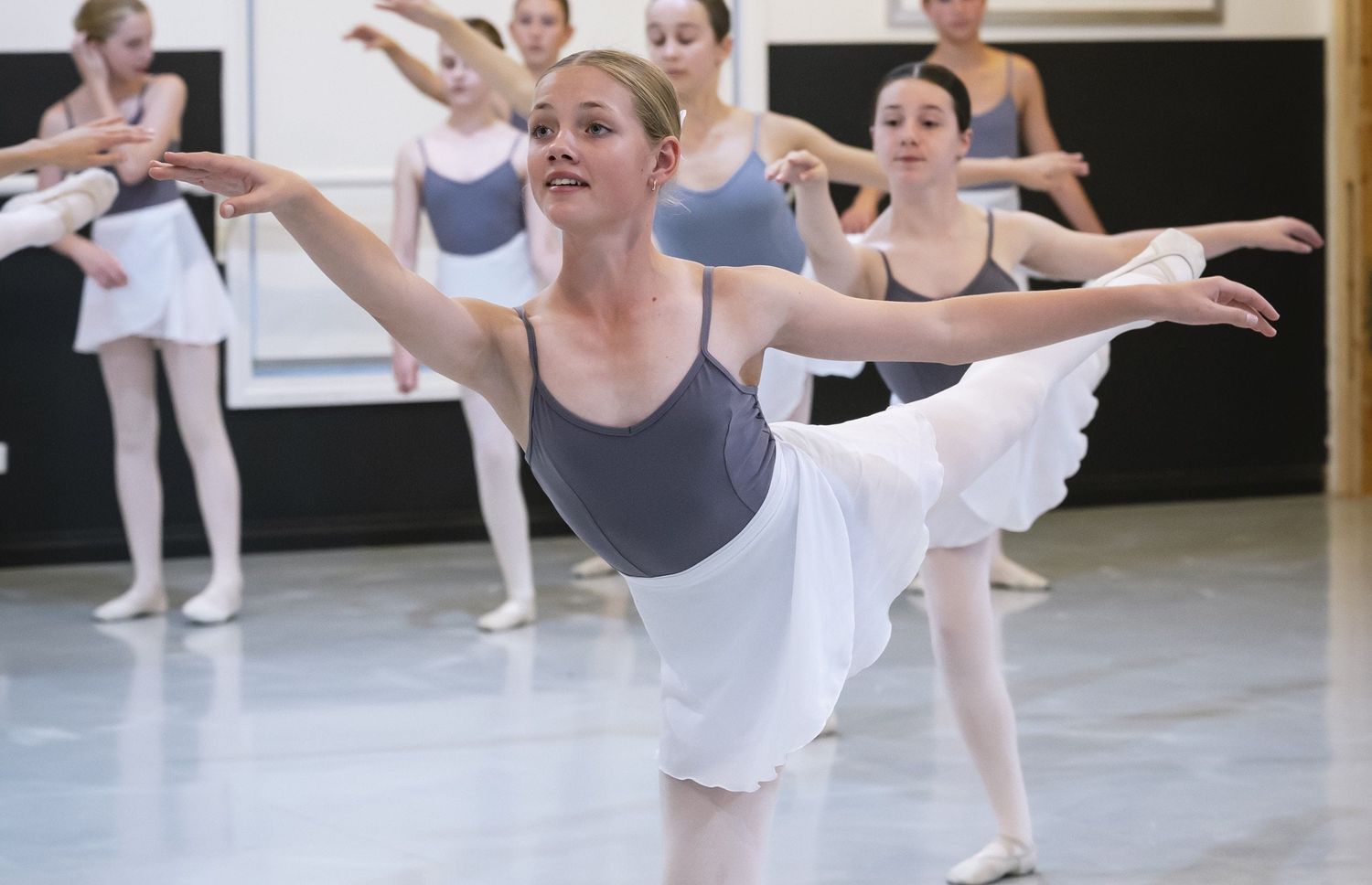

Ballet
How To Understand Ballet
Published: January 9, 2024
Learn the art of ballet and gain a deeper understanding of its techniques, history, and beauty. Discover how to appreciate ballet as a dance form and appreciate the dedication and skill required.
(Many of the links in this article redirect to a specific reviewed product. Your purchase of these products through affiliate links helps to generate commission for AudioLover.com, at no extra cost. Learn more)
Table of Contents
Introduction
Ballet is a captivating and elegant art form that has been enchanting audiences for centuries. It is a highly technical dance form that requires grace, flexibility, strength, and precision. Ballet originated during the Renaissance period in Italy and later developed into a full-fledged art form in France. Today, it is performed and appreciated worldwide.
What sets ballet apart is its unique blend of athleticism and artistry. Dancers effortlessly combine intricate footwork, breathtaking leaps, and graceful movements to tell stories and convey emotions. It is a demanding discipline that requires years of training and dedication.
Ballet has a rich history that dates back to the 15th century. It has evolved over time, influenced by various styles and techniques. From classical ballet to contemporary interpretations, this art form continues to evolve and push the boundaries of athleticism and creativity.
In this article, we will delve into the mesmerizing world of ballet. We will explore its history, the fundamental elements that make up this dance form, the techniques and vocabulary used by dancers, the different styles of ballet, and the famous ballets and choreographers that have left an indelible mark on the art form.
We will also discuss the etiquette and protocol associated with enjoying ballet performances and the many benefits that come with training in this art form. Whether you are a ballet enthusiast or someone new to the world of dance, this article aims to provide a comprehensive understanding of ballet and its significance in the performing arts.
So, get ready to immerse yourself in the beauty and grace of ballet as we embark on this journey into the enchanting world of dance.
History of Ballet
The history of ballet can be traced back to the Italian Renaissance courts of the 15th century. It began as a form of entertainment for the noble and royal elites. The first recorded ballet performance, known as the “Ballet Comique de la Reine,” took place in 1581 in France. This marked the beginning of ballet as a theatrical art form.
Over the centuries, ballet evolved and gained popularity across Europe, particularly in France, where it became an integral part of court festivities. It wasn’t until the 19th century, known as the Romantic era, that ballet began to flourish as a standalone art form. Innovations in choreography, technique, and storytelling transformed ballet into a medium for emotional expression.
One of the most influential figures in ballet’s history is Marius Petipa, who served as the ballet master of the Imperial Ballet in St. Petersburg, Russia, during the late 19th century. He is responsible for creating some of the most iconic ballets, including “Swan Lake,” “The Nutcracker,” and “Sleeping Beauty.” Petipa’s choreographic style emphasized technical precision and grandeur.
The 20th century saw a shift towards modern and contemporary ballet. Choreographers such as George Balanchine and Martha Graham explored new movements and pushed the boundaries of traditional ballet technique. Ballet became more experimental and expressive, incorporating elements from other dance forms and embracing a broader range of themes and narratives.
Today, ballet continues to evolve and embrace diversity. Classical ballet is still revered and performed, but there is also a growing interest in neoclassical and contemporary ballet styles. Companies like the Bolshoi Ballet, the Royal Ballet, and the New York City Ballet are renowned for their exceptional performances and preservation of traditional repertoire.
Ballet has undoubtedly left an indelible mark on the world of dance and the performing arts. Its rich history, technical precision, and timeless beauty ensure that it will continue to enchant audiences for generations to come.
Elements of Ballet
Ballet is a visually stunning art form that combines several essential elements to create its signature style and beauty. These elements work together harmoniously to bring the choreography to life on stage.
1. Technique: Ballet technique is the foundation of the dance form. It includes precise movements, body alignment, and control. Dancers must master specific positions and steps, such as plié, tendu, and arabesque, to execute movements with grace and precision.
2. Poise and Posture: Posture is of utmost importance in ballet. Dancers strive for long, elongated lines and a lifted torso. They maintain a strong core and achieve a poised and upright presence, even in the most demanding movements.
3. Musicality: Ballet is intimately linked to music. Dancers must interpret the music with their movements, matching their timing and dynamics to the rhythm and melody. Musicality allows dancers to express emotions and enhance the storytelling aspect of ballet.
4. Grace and Elegance: Ballet is characterized by its elegance and fluidity. Dancers strive for seamless transitions between movements, creating an ethereal quality. It requires a combination of strength, flexibility, and control to achieve the desired gracefulness.
5. Artistry and Expression: Ballet is not just about executing movements; it’s about conveying emotions and telling stories through dance. Dancers use their expressive faces and body language to communicate the narrative effectively. They harness their emotions and connect with the audience on a deeper level.
6. Costumes and Makeup: The visual aspect of ballet is enhanced by elaborate costumes and meticulously applied makeup. Costumes are designed to enhance the movements and create a sense of character and atmosphere on stage.
7. Partnering: Partnering is a unique element of ballet where male and female dancers work together to create visually stunning duets. Lifts, pas de deux, and intricate partnering sequences require strength, trust, and impeccable timing.
Ballet is a combination of these elements that allows dancers to express themselves artistically while pushing the boundaries of physicality. The mastery and integration of these components create the mesmerizing performances that captivate audiences worldwide.
Ballet Technique
Ballet technique is the foundation upon which all other aspects of ballet are built. It encompasses the specific movements, positions, and principles that dancers must master in order to execute ballet choreography with precision and grace.
One of the defining characteristics of ballet technique is its emphasis on turnout. Turnout refers to the rotation of the legs from the hips, allowing the feet to face outward. This creates a visually pleasing line and enhances balance and stability. Turnout is a fundamental element of ballet technique and is incorporated into various positions and movements throughout a dancer’s training.
Another crucial aspect of ballet technique is proper alignment. Dancers strive to maintain a vertical and elongated posture, with the spine lengthened and the shoulders relaxed. This alignment promotes stability and allows for the execution of movements with ease and grace.
Ballet technique also includes a wide range of positions and steps that form the vocabulary of ballet. Some of the basic positions include first position, where the heels are together and the toes point outwards, and fifth position, where one foot is placed in front of the other with the heel of the front foot touching the arch of the back foot. Steps like plié (a bending of the knees), tendu (a brushing of the foot along the floor), and relevé (a rising onto the balls of the feet) are essential building blocks of ballet technique.
Throughout their training, dancers progress through various levels of technique, gradually increasing in complexity and difficulty. As dancers advance, they learn more intricate movements, turns, and jumps. Pirouettes, grand jetés, and fouettés are just a few examples of the breathtaking feats of athleticism that are achieved through rigorous ballet technique training.
Ballet technique is further enhanced through the incorporation of barre exercises and center work. Barre exercises are performed while holding onto a bar or a sturdy support, allowing dancers to focus on building strength, flexibility, and balance. Center work, on the other hand, is performed in the middle of the studio, without the support of the barre. It challenges dancers to execute technique and movements with increased stability and control.
Professional ballet dancers devote years to honing their technique, constantly refining their skills and striving for perfection. The discipline and precision of ballet technique provide a strong foundation for dancers to express themselves artistically, while pushing the limits of their physical abilities.
Ballet Vocabulary
Ballet has its own unique vocabulary, comprising a plethora of French terminology that is used to describe the various movements, positions, and techniques in the dance form. Understanding ballet vocabulary is essential for both dancers and those who appreciate ballet performances. Here are some commonly used ballet terms:
- Plié: A bending of the knees while keeping the back straight. It can be performed in various positions, such as demi-plié (half bend) or grand plié (full bend).
- Tendu: A controlled brushing of the foot along the floor, extending the leg fully without lifting it off the ground.
- Arabesque: A position where one leg is extended behind the body while keeping the torso upright. The supporting leg can be either straight or in demi-plié.
- Pirouette: A turn on one leg, usually performed with the other leg in passé position (foot placed at the knee of the supporting leg).
- Grand jeté: A large leap where one leg extends forward while the other leg extends behind, creating a dynamic airborne split.
- Adagio: A slow, fluid sequence of movements that focuses on balance, extension, and control.
- En pointe: Dancing on the tips of the toes using specialized pointe shoes. This technique requires significant strength and balance.
- Port de bras: The movement of the arms, which accompanies and enhances the movements of the legs and body.
- Chassé: A step where one foot chases or slides after the other, creating a gliding movement.
- Relevé: Rising up onto the balls of the feet, transitioning from a flat foot position.
These are just a few examples of the extensive ballet vocabulary. Each ballet movement and position has its own specific term to precisely convey its intended execution.
Learning ballet vocabulary is important for dancers as it enables clear communication and understanding within the dance community. It also enhances the appreciation of ballet for audiences, as they can better understand and recognize the technical aspects of the performance.
Ballet vocabulary is continually evolving, adapting to new choreographic styles and influences. Therefore, it is important to stay updated with current terminology in order to fully grasp the intricacies of ballet and immerse oneself in its captivating world.
Ballet Styles
Ballet has evolved over time, giving rise to various styles that showcase different techniques, aesthetics, and artistic approaches. Here are some prominent ballet styles:
- Classical Ballet: Classical ballet refers to the traditional and formal style that originated in the 19th century. It is characterized by its adherence to strict technique, graceful movements, and elaborate storytelling. Classical ballet often features tutus, pointe work, and precise choreography.
- Neoclassical Ballet: Neoclassical ballet emerged in the 20th century as a reaction against the strict narrative structure of classical ballet. It incorporates more abstract movements and greater experimentation with music and choreography. Neoclassical ballet often challenges the boundaries of traditional technique while still maintaining its foundation.
- Contemporary Ballet: Contemporary ballet is a fusion of classical ballet and modern dance. It combines the fluidity and expressiveness of modern dance with the strong technique and discipline of ballet. Contemporary ballet allows for greater freedom of movement and interpretation, often incorporating unconventional choreographic elements.
- Balanchine Style: Named after the renowned choreographer George Balanchine, Balanchine style is characterized by its fast and intricate footwork, musicality, and emphasis on athleticism. It often features more abstract and plotless works, with a focus on the visual effect of the choreography.
- Bournonville Style: The Bournonville style is named after the Danish choreographer August Bournonville. It epitomizes the elegant and light-hearted nature of Danish ballet. Bournonville style emphasizes fluidity, quick footwork, musicality, and portraying a sense of joy and playfulness in performances.
- Royal Academy of Dance (RAD) Style: The RAD style is a ballet technique and syllabus developed by the Royal Academy of Dance. It focuses on the development of a strong technique, musicality, and artistry. The RAD style is recognized for its structured approach to training and exams.
These styles are just a selection of the diverse range of ballet styles that exist today. Each style offers its own unique interpretation of ballet technique, music, and artistic expression.
It is important to note that ballet styles continue to evolve, influenced by new choreographic approaches and cultural influences. Contemporary ballet, in particular, serves as a creative platform for choreographers to push boundaries and redefine the art form.
Whether steeped in tradition or pushing the limits of innovation, ballet styles offer a captivating variety of expressions, each contributing to the vitality and evolution of this timeless art form.
Famous Ballets and Choreographers
Throughout history, numerous ballets and choreographers have made an indelible mark on the world of dance. Their creations and contributions have delighted audiences and shaped the trajectory of ballet as an art form. Here are a few of the most renowned ballets and choreographers:
- “Swan Lake” – Choreographed by Marius Petipa and Lev Ivanov: “Swan Lake” is one of the most iconic and beloved ballets of all time. Premiering in 1877, this enchanting tale of love, deception, and transformation features a mesmerizing score by Pyotr Ilyich Tchaikovsky and demanding technical and emotional performances by the dancers.
- “The Nutcracker” – Choreographed by Marius Petipa and Lev Ivanov: “The Nutcracker” is a holiday favorite that has become synonymous with the festive season. First performed in 1892, this ballet tells the story of a young girl named Clara and her magical adventure on Christmas Eve. The score, also composed by Tchaikovsky, is instantly recognizable and adds to the whimsical atmosphere of the production.
- George Balanchine: George Balanchine, also known as the father of American ballet, was a pioneering choreographer who co-founded the New York City Ballet. His innovative style and groundbreaking works, such as “Serenade,” “Apollo,” and “The Four Temperaments,” revolutionized ballet choreography and placed a strong emphasis on athleticism and musicality.
- Mikhail Fokine: Mikhail Fokine is renowned for his role in the development of modern ballet. His works, including “Les Sylphides” and “The Dying Swan,” showcased a departure from the strict narrative structure and explored new themes and movements. Fokine’s choreographic style emphasized expressiveness and fluidity of movement.
- Jerome Robbins: Jerome Robbins was an influential American choreographer who seamlessly blended ballet and theater. His works, such as “Fancy Free” and “West Side Story Suite,” integrated storytelling, music, and dance to create compelling narrative-driven ballets. Robbins’ ability to capture human emotions and create complex characters through movement sets him apart as a visionary choreographer.
- Pina Bausch: Pina Bausch was a German choreographer known for her groundbreaking work in the field of contemporary dance-theater. Her productions, such as “Café Müller” and “The Rite of Spring,” challenged traditional notions of ballet and incorporated elements of drama, emotion, and raw physicality.
These are just a few examples of the countless ballets and choreographers that have left an indelible mark on the art form. Their contributions have pushed the boundaries of tradition, sparked innovation, and showcased the true power and beauty of ballet as a medium of artistic expression.
Ballet Etiquette
Attending a ballet performance is a cultural experience that comes with its own set of etiquette and protocols. Observing proper ballet etiquette ensures a respectful and enjoyable atmosphere for both the performers and fellow audience members. Here are some key points to keep in mind:
- Arrive on time: It is important to arrive at the theater before the performance begins. Latecomers can disrupt the dancers and disturb other audience members.
- Dress appropriately: Dressing elegantly and respectfully is customary for ballet performances. While formal attire is not mandatory, it is recommended to dress smartly.
- Avoid excessive noise and distractions: During the performance, silence your mobile devices and refrain from talking, whispering, or making unnecessary noise. This ensures that everyone can fully immerse themselves in the magic of the ballet.
- No photography or recording: Unless expressly permitted, it is generally not allowed to take photographs, record videos, or use flash photography during the performance. These actions can be distracting to both the performers and other audience members.
- Applaud appropriately: Applaud when appropriate, such as at the end of a piece or during a curtain call. However, refrain from clapping between movements or during quiet moments to maintain the atmosphere of the performance.
- Respect personal space: Be mindful of the personal space of those around you. Avoid leaning forward excessively or blocking the view of others.
- Be attentive and engaged: Give your full attention to the performance. Watch and appreciate the dancers’ technique, artistry, and storytelling. Avoid distracting behaviors, such as talking, eating, or rustling programs.
- Follow theater rules: Familiarize yourself with the specific rules and policies of the theater, including guidelines on food, drinks, and late seating.
By following these etiquette guidelines, you contribute to a respectful and immersive environment that allows both performers and audience members to fully enjoy the ballet experience.
Remember, each ballet performance is a moment of artistry and dedication brought to life on stage. By observing ballet etiquette, you show your appreciation for the hard work and talent of the dancers, creating a memorable experience for everyone involved.
Benefits of Ballet Training
Ballet training offers numerous physical, mental, and emotional benefits for individuals of all ages and abilities. Whether pursuing ballet as a professional career or as a recreational activity, the benefits of ballet extend beyond the dance studio. Here are some key advantages of ballet training:
- Physical Fitness: Ballet is a demanding physical activity that improves strength, flexibility, coordination, and balance. Through regular training, dancers develop lean and toned muscles, improved posture, and increased stamina.
- Discipline and Focus: Ballet requires a high level of discipline and focus. Dancers learn to follow instructions, adhere to a structured training regimen, and develop a strong work ethic. This discipline and focus can be applied to other areas of life, fostering a sense of commitment and dedication.
- Artistic Expression: Ballet is a powerful form of artistic expression. Through movement, dancers are able to convey emotions, stories, and ideas. This creative outlet allows individuals to explore and communicate their innermost feelings and experiences.
- Mental Sharpness: Ballet involves learning complex choreography, memorizing sequences, and coordinating movements. This cognitive process keeps the mind sharp, improves memory, concentration, and mental agility.
- Posture and Alignment: Ballet emphasizes proper alignment, core strength, and good posture. These principles translate into everyday life, promoting better spinal health, reduced muscle tension, and improved overall body alignment.
- Self-Confidence and Self-Esteem: Ballet training instills a sense of self-confidence and self-esteem. As dancers develop their skills and witness their progress, they gain a sense of accomplishment and self-belief that extends beyond the dance studio.
- Social and Performance Skills: Ballet often involves group classes and performances, fostering social connections and teamwork. Dancers learn to work collaboratively, support one another, and develop valuable performance skills that can be applied in various settings.
- Stress Relief and Emotional Well-being: Engaging in ballet can provide a release from daily stressors and promote emotional well-being. The combination of physical activity, artistic expression, and the sense of community in the dance studio can have a positive impact on mental health and overall mood.
These benefits of ballet training are not limited to professional dancers. People of all ages and backgrounds can reap the rewards of this beautiful art form. Whether it’s for physical fitness, personal growth, or pure enjoyment, ballet offers a holistic approach to wellness and self-expression.
Resources for Learning Ballet
If you are interested in learning ballet, there are numerous resources available to help you embark on your journey. Whether you prefer in-person classes, online tutorials, or educational materials, these resources can provide valuable guidance and support. Here are some options to consider:
- Local Dance Studios and Schools: Check for ballet classes offered at local dance studios and schools in your area. Many studios offer classes for beginners of all ages, providing expert instruction and a supportive learning environment.
- Professional Dance Companies: Some professional dance companies offer community programs and workshops that cater to individuals interested in learning ballet. These programs may include introductory classes or specialized workshops conducted by professional dancers.
- Online Platforms and Tutorials: Explore online platforms that provide ballet tutorials and classes. Websites and platforms such as DancePlug, BalletHub, and even YouTube offer a wide range of instructional videos and tutorials for dancers at different levels.
- Books and Written Resources: There is a wealth of literature available on ballet techniques, history, and training methods. Look for books, instructional guides, and memoirs written by renowned ballet instructors and choreographers to gain insights and deepen your understanding of ballet.
- Ballet Documentaries and Films: Watching documentaries and films about ballet can provide inspiration and educational insights. Films such as “First Position,” “Ballerina,” and “A Ballerina’s Tale” offer a behind-the-scenes look at the world of ballet and the dedication required to succeed.
- Online Ballet Communities: Engage with online ballet communities and forums where you can connect with fellow dancers, seek advice, and share experiences. Social media platforms like Instagram and Facebook have dedicated ballet communities that offer support and insights from dancers from around the world.
- Workshops and Intensive Programs: Consider attending ballet workshops or intensive programs, which offer concentrated training over a short period of time. These programs often include masterclasses with renowned instructors and provide a valuable immersive experience.
It’s important to choose resources that align with your goals and aspirations in ballet. Whether you are a beginner looking to learn the basics or an experienced dancer seeking to refine your technique, these resources can provide the guidance and inspiration you need to progress in your ballet journey.
Remember, learning ballet is a continuous process, so embrace the joy of discovery and the lifelong pursuit of mastering this exquisite art form.
Conclusion
Ballet is a captivating and enduring art form that encompasses grace, athleticism, and artistic expression. Whether you are a ballet enthusiast or someone new to the world of dance, understanding the rich history, technique, vocabulary, and styles of ballet can enrich your appreciation of this exquisite art.
From its origins in the 15th century Italian courts to the grand productions performed on stages worldwide today, ballet has flourished and evolved. It has given rise to legendary ballets and choreographers who have left an indelible mark on the art form and continue to inspire dancers and audiences alike.
Ballet training offers a myriad of benefits, ranging from physical fitness to discipline, mental sharpness, and self-confidence. Whether pursuing ballet professionally or as a recreational activity, the dedication and hard work required in ballet training can foster personal growth and a deep connection to the art form.
When attending ballet performances, observing proper etiquette not only shows respect for the performers and fellow audience members but also creates an atmosphere conducive to the immersive and magical experience of ballet.
If you are interested in learning ballet, diverse resources are available, including local dance studios, online platforms, books, and workshops. Embrace the opportunity to explore and immerse yourself in the beauty of ballet, finding your own path in this art form.
In conclusion, ballet is a timeless and captivating art form that continues to mesmerize and inspire audiences around the world. Its combination of athleticism, grace, and artistic expression makes it an extraordinary medium for storytelling and emotional connection. Whether as a participant or an observer, ballet has the power to evoke emotions, ignite passions, and transport us to a world of elegance and beauty.

